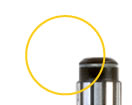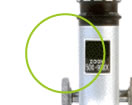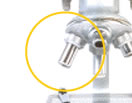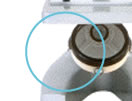Enhancement of neuron:device interactions by surface presentation of small molecule neurotrophin receptor agonists
Stefan Heller (Otolaryngology)
Frank Longo (Neurology & Neurological Sciences)
Gerald Fuller (Chemical Engineering)
The Cochlear implant is the only routinely implanted electrical stimulation device used to restore a human sensory disability. Despite a 30-year history, cochlear implants do not work perfectly because these devices have to stimulate nerve fibers over a relative large distance, which results in energy inefficiency and suboptimal stimulation. Our proposed research focuses on generating a novel surface material for cochlear implants that has the ability to attract auditory nerve fibers toward the electrical stimulation electrode. This surface material consists of chemically linked compounds that stimulate nerve fiber growth and nerve cell survival. We envision that our research will lead to a new generation of cochlear implants with greatly improved battery life and a substantially higher density of channels (more frequencies), which will revolutionize the performance and applicability of this device. We hypothesize that a device that stimulates nerve growth and survival will greatly enlarge the pool of patients that qualify for this novel cochlear implant technology, thus allowing many hard-of-hearing or deaf patients to hear again. |










